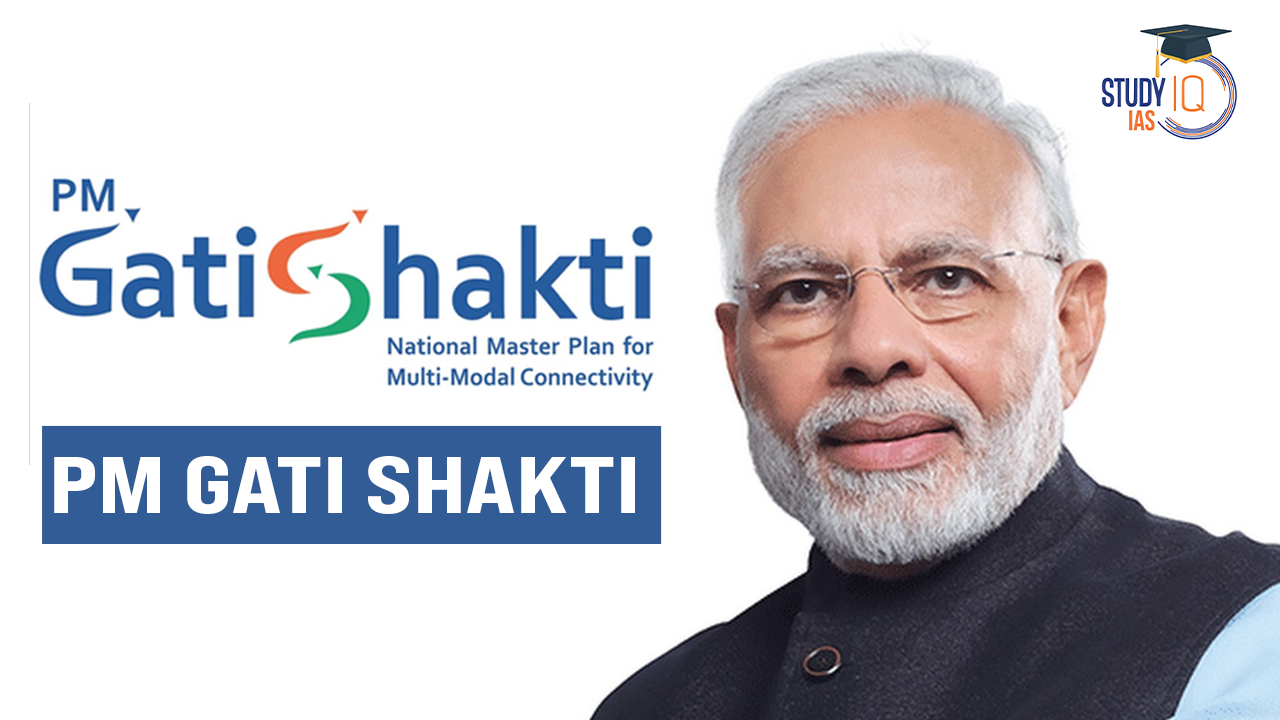Table of Contents
PM Gati Shakti: Introduction
On August 15, 2021, Prime Minister Narendra Modi announced the PM Gati Shakti initiative during his address from the Red Fort, marking a significant shift in India’s approach to infrastructure development. This initiative aims to create a holistic framework for multi-modal connectivity, integrating various transportation modes to enhance efficiency, reduce logistics costs, and stimulate economic growth. As of October 2024, the initiative is celebrating its third anniversary, with notable achievements demonstrating its potential to reshape India’s infrastructure landscape.
Objectives of PM Gati Shakti
1. Integrated Planning and Execution
The core objective of PM Gati Shakti is to facilitate seamless planning and execution of infrastructure projects across multiple sectors, including railways, roadways, airways, and waterways. This integrated approach seeks to break down silos between various ministries and state governments, ensuring that infrastructure projects are executed in a coordinated manner.
2. Enhancing Last-Mile Connectivity
By improving last-mile connectivity, the initiative aims to make transportation more accessible for the public and businesses, thus fostering economic growth and reducing travel time for people and goods.
3. Reducing Logistics Costs
High logistics costs have long hindered India’s economic growth. PM Gati Shakti aims to reduce these costs through better planning, improved connectivity, and efficient resource allocation.
4. Sustainable Infrastructure Development
The initiative emphasizes sustainable development, incorporating environmental considerations into the planning and execution of infrastructure projects.
Key Components of PM Gati Shakti
1. National Master Plan for Multi-Modal Connectivity
The National Master Plan (NMP) serves as the backbone of PM Gati Shakti, encompassing various infrastructure schemes such as:
- Bharatmala: Focused on road development.
- Sagarmala: Aimed at port modernization and coastal community development.
- UDAN: A regional airport scheme enhancing regional air connectivity.
2. Data Integration and Technological Advancements
The initiative integrates data from 44 Central Ministries and 36 States/UTs, utilizing 1,614 data layers to ensure informed decision-making. A three-tier Standard Operating Procedure (SOP) system has been established to maintain data accuracy, facilitating real-time project monitoring and assessment.
3. District Master Plan (DMP) Portal
The DMP portal is being developed to extend PM Gati Shakti to the district level, allowing local authorities to identify infrastructure gaps and collaborate on project planning. A beta version has already been tested in 28 aspirational districts, with a full rollout planned by March 31, 2025.
Achievements of PM Gati Shakti
1. Infrastructure Planning
- The Ministry of Road Transport and Highways (MoRTH) has planned over 8,891 km of roads using the NMP.
- The Ministry of Railways has used the NMP to plan more than 27,000 km of railway lines.
2. Speed of Execution
The initiative has significantly accelerated project execution:
- The Ministry of Petroleum and Natural Gas streamlined the Detail Route Survey (DRS) process, reducing report creation time from 6-9 months to just one day using electronic methods.
3. Successful Projects
Notable projects under PM Gati Shakti include:
- A 13 GW renewable energy project that optimally aligned the Green Energy Corridor for interstate transmission.
- Development of a disaster management plan for flood-prone areas in Goa.
- Planning of a 300 km coastal corridor in Gujarat, which reduced clearance permissions from 28 to 13, enhancing connectivity and tourism.
National Logistics Policy (NLP) 2022
Launched on September 17, 2022, the NLP complements the Gati Shakti initiative by establishing a cost-effective logistics network. Key features include:
- Aiming to improve India’s Logistics Performance Index (LPI) ranking to among the top 25 countries by 2030.
- Implementation driven by the Comprehensive Logistics Action Plan (CLAP), focusing on digital logistics, asset standardization, and training.
Key Initiatives Under NLP
- Unified Logistics Integrated Platform (ULIP): This platform integrates 33 logistics-related systems, promoting innovation and collaboration among over 930 private companies.
- Logistics Data Bank (LDB): Developed for tracking containerized EXIM cargo, using IoT and Big Data for real-time visibility.
Gati Shakti Sanchar Portal
Launched on May 14, 2022, the Gati Shakti Sanchar Portal aims to facilitate quicker telecom infrastructure rollout by centralizing Right of Way (RoW) approvals. As of October 11, 2024, it has processed over 211,000 applications, supporting the rapid deployment of 5G services nationwide.
PM Gati Shakti UPSC
The PM Gati Shakti initiative represents a landmark transformation in India’s infrastructure development approach. By integrating multi-modal transport, streamlining project execution, and leveraging data-driven strategies, it aims to create a robust, efficient, and sustainable infrastructure ecosystem. The combined efforts of PM Gati Shakti and the National Logistics Policy are positioning India as a global logistics hub, enhancing connectivity, fostering economic growth, and ultimately contributing to Aatmanirbhar Bharat (self-reliant India).


 Governor's Assent to State Laws and Bill...
Governor's Assent to State Laws and Bill...
 Niveshak Didi Initiative Phase 2 launche...
Niveshak Didi Initiative Phase 2 launche...
 Panchayat Advancement Index (PAI), State...
Panchayat Advancement Index (PAI), State...





















